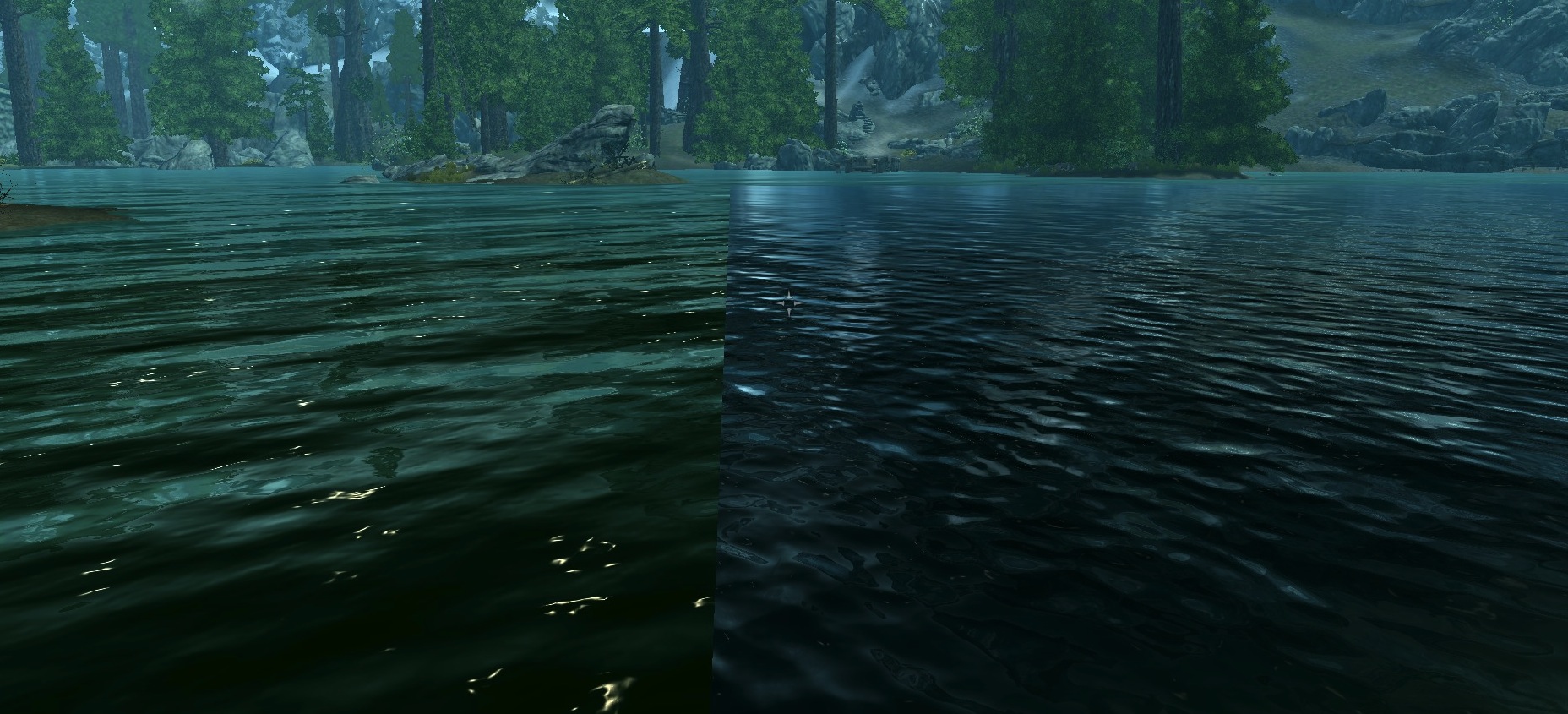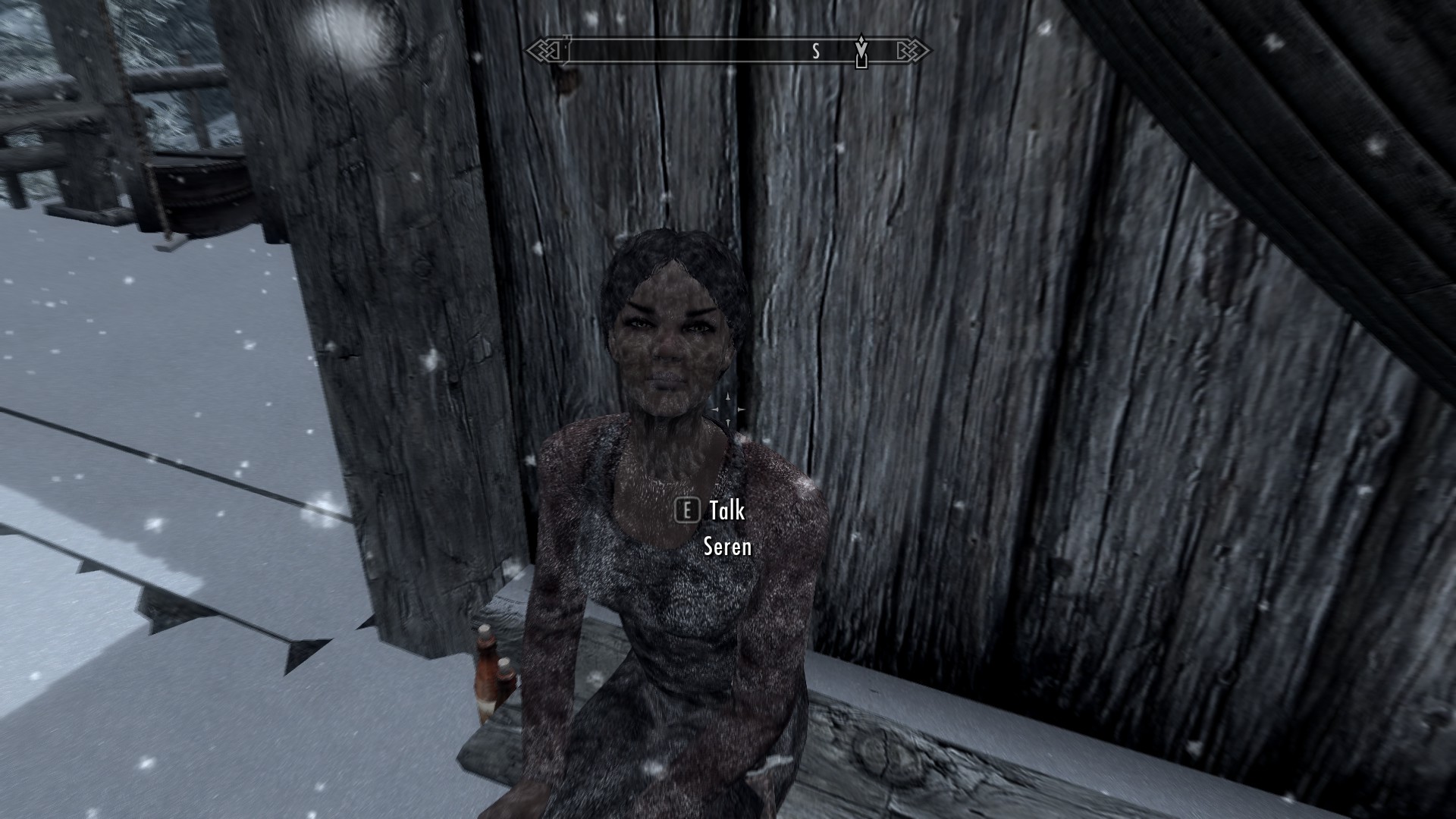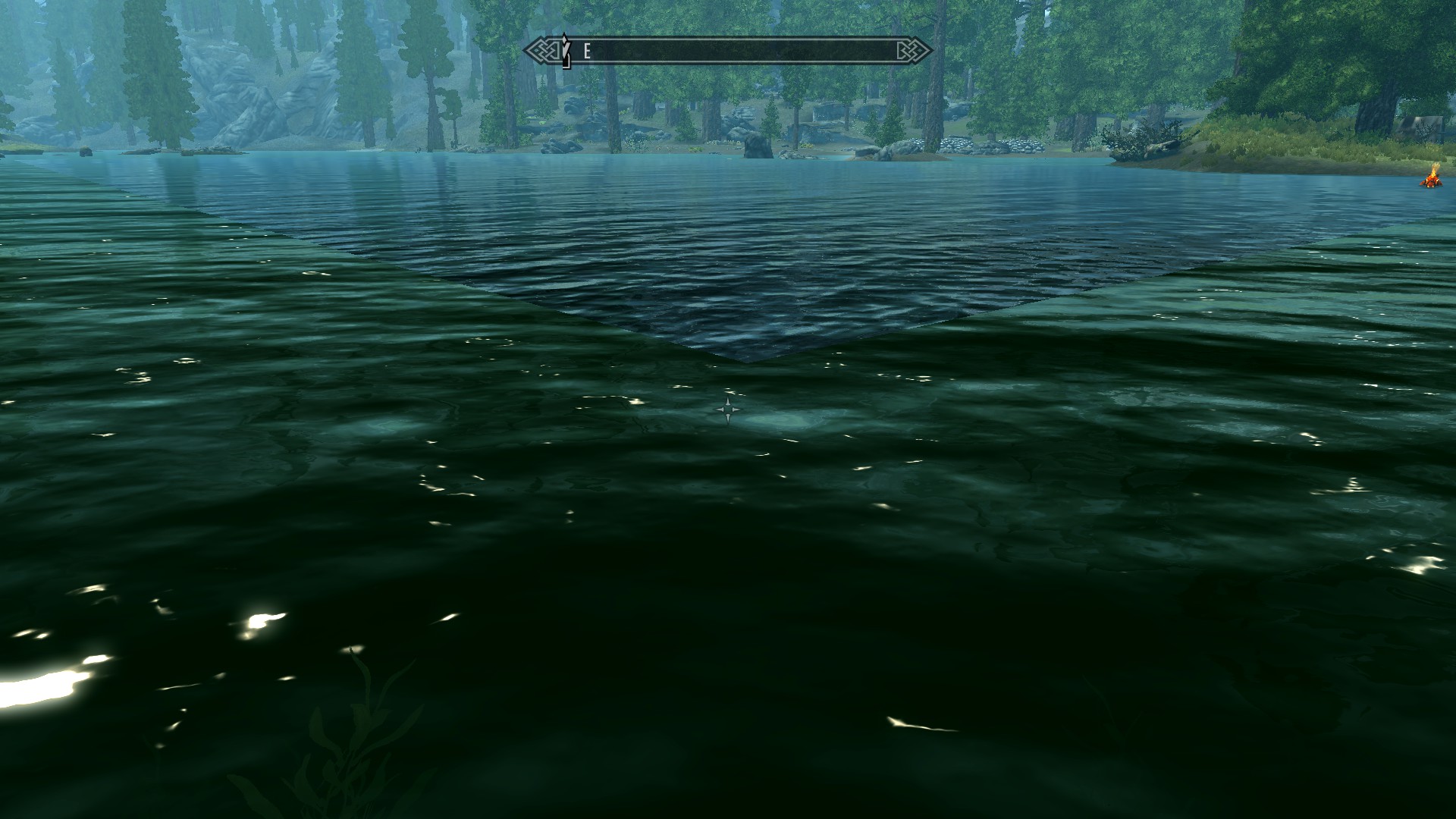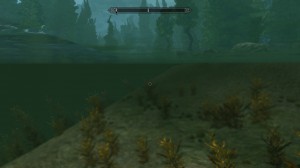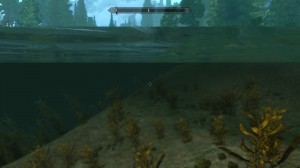Disruptive Mods and Skyrim
As part of the IMMERSe research I’m currently involved in, our team has been spending time lately examining mods for the Bethesda Elder Scrolls game Skyrim. Mods are (generally) user generated content for commercially produced and distributed games, and can alter anything from the realism of how light reflects off of surfaces in the game to building whole new environments for players to explore and missions for players to complete. Our primary focus has been on immersive, narrative mods that significantly effect the story aspects of the game, but one particular point of interest I’ve developed over the last couple months has been when mods fail, or at least appear to fail in their intended, stated goal. In the interest of seeing what happens when mods break themselves, break each other, or break gameplay, I enlisted some colleagues and went about trying to see how we could use mods to fuck up Skyrim.
It wasn’t hard to screw up our Skyrim play. We used a very simple methodology–throw a whole bunch of mods on the game at once and see what happens. We installed and ran multiple aesthetic mods: dozens of patches designed to add richer textures, more realistic dust in the air, detailed sound effects, and so on. Also installed were large narrative mods like the Falskaar pack (which gives a player an additional 25 hours of playable missions and adds a new map to the game about a third of the size of Skyrim itself) and other interactive mods that alter the way the player interfaces with the environment. The hope in running all these mods at once is that one mod gets in the way of another in a really interesting way, and that the player consequently gets a chance to learn about how the game functions or see it from a new perspective (another hope might be that all these mods just overload the computer’s brain, but we were playing on a really powerful machine). As I said, this wasn’t hard to achieve. Turning on the Falskaar map and mission pack, we set about to try some new adventures, but some of the survival mods we’d installed got in the way of us going about our business. Survival mods effect your ability to deal with the elements, so swimming is a bad idea–your stamina will fall away, your vision will blur, and eventually bone chill will set in. Unfortunately, all the traditional ways to warm yourself up and dry yourself off have been disabled by some other mod, so you’re at a loss for what to do. We eventually found an indoor fire that built our player’s stamina, but by then we’d wasted about twenty minutes. Meanwhile, our cold weather mod was giving all of the Falskaar NPCs frostbite. We decided to head back to Skyrim proper before anyone died of exposure.
An effect of our Cold and Wet mod in Falskaar. This woman is not supposed to look like this.
One of the problems with using so many mods at once was that is was sometimes hard to tell which mods were glitching. One audio mod forces the player to turn her head in order to hear any dialogue (though effects, music, and ambient sounds are always audible). The strange algorithmic logic of such a mod–ears are on the side of the head and necessary for hearing, so obviously you want to point your ears toward the source of sound–are reminiscent of some of the AAA games of the last decade, where turning or walking away from the source of sound turned the volume on it way down. However, larger immersive Skyrim mods such as Falskaar also include dialogue recorded by amateur voice actors, often in their homes or some other locale lacking the benefit of soundproofing. The final result is that the player turns her head to hear dialogue from a barmaid who sounds like an American teenager doing a bad British accent with a dishwasher running in the background. These sounds aren’t so much non-diegetic as they are acousmatic–it’s impossible to tell just where the sounds are coming from, or if they’re meant to be in the world or not, a question raised by the fact that the player’s modded character is apparently hard of hearing when it comes to human voices.
Then there were the mods that changed the look of the environment. Now these were interesting. I had hoped that by running multiple mods designed to affect the same game elements, we might get to see a total breakdown of the game’s visual interface processes. We ran two water mods at the same time, and I hoped that when we approached a lake we would observe a pixelated flickering mess as the two mods fought for control over what the player saw. Instead, they just cooperated and cut the lake right in half. Sections of the water were green, others were blue, and the areas were separated by nice clean lines and right angles. Even underwater a flick to the right would change the opaqueness and tinting of the view, while up above an invisible boundary marked the difference between ebb and flow and the waters rippled in opposite directions. Meanwhile, multiple tree mods had an easy time getting along too–some would exist in the same space (making for interesting topiary arrangements), while others were sometimes pushed up out of the ground–not to fall over, but rather to float overhead, suspended in the air.
Two waters mods getting along swimmingly, while my flaming horse (also a mod) paddles through with undampened spirits.
Water mods just a bit to the left or right.
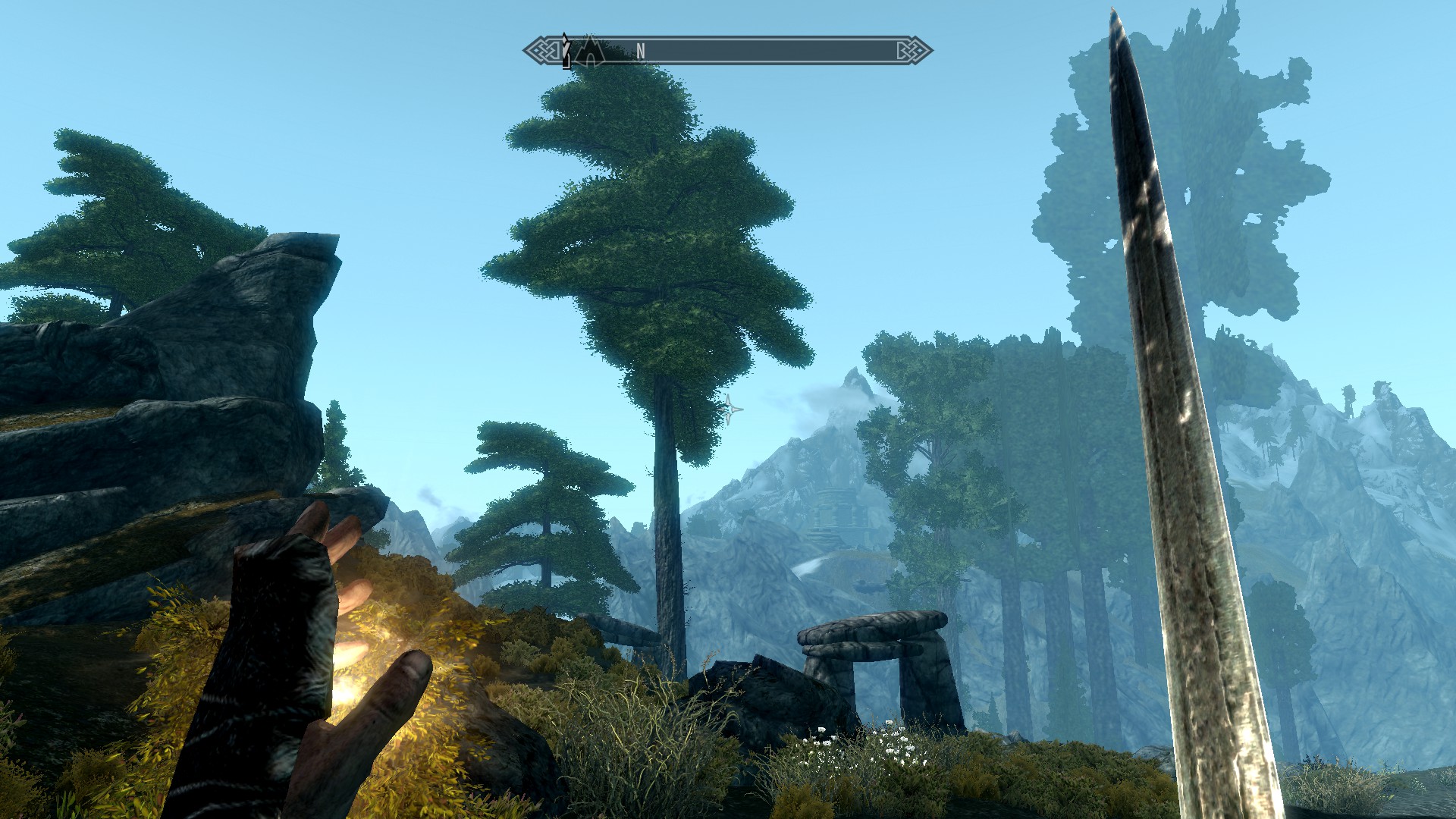 While some multiply-modded trees glitched out visually…
While some multiply-modded trees glitched out visually…
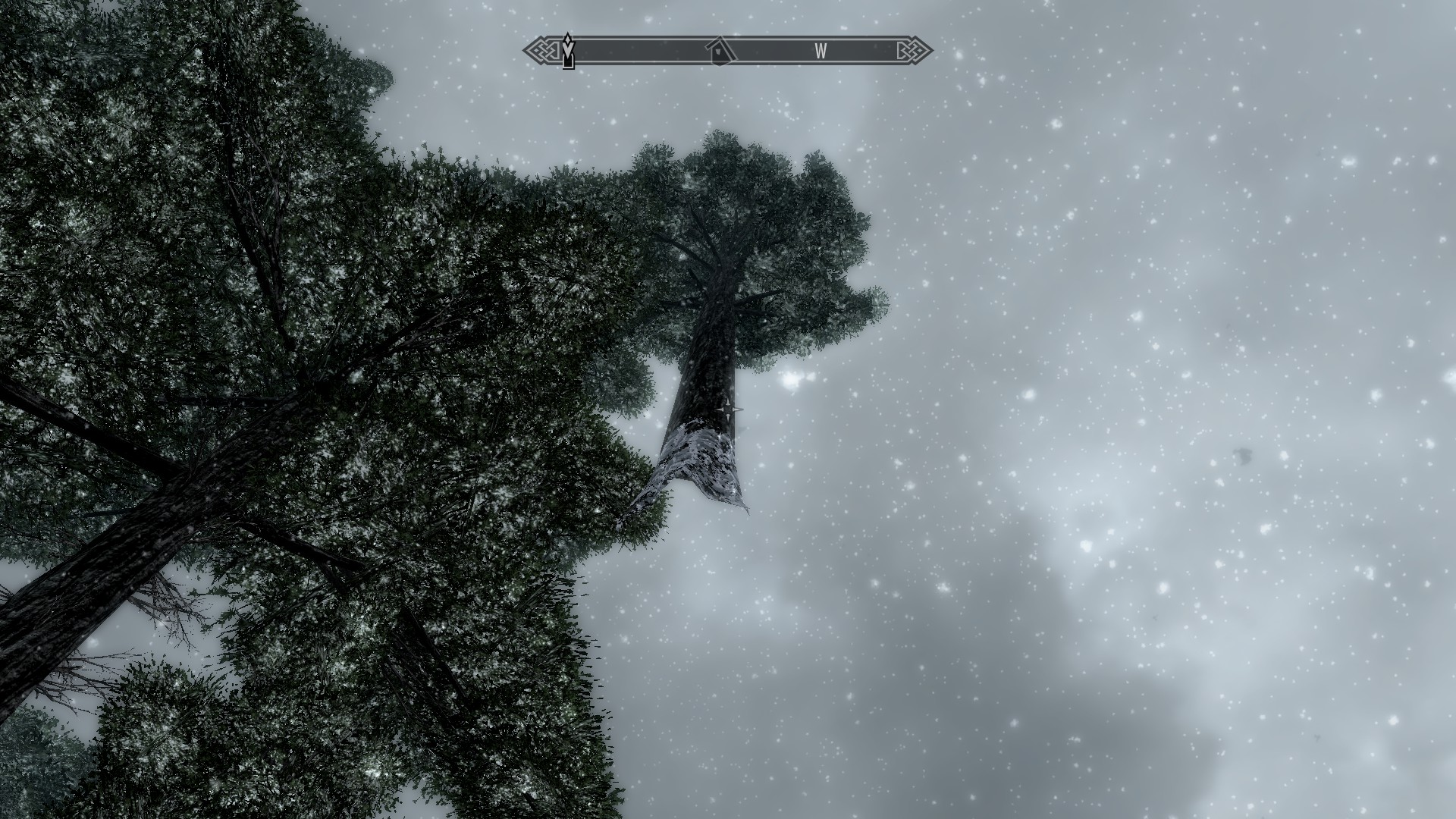 …others were altered spacially.
…others were altered spacially.
These kinds of mod glitches shed new light on the software processes of the game. Rather than seizing up or prioritizing one mod over the other, the system has opted to resolve the conflict in what it thinks of as an equitable fashion. While we generally think of a game as incapable of breaking its own rules, Skyrim here has dealt with an informational surplus by simply incorporating all options. At least, that’s how it works out visually.
The explicitly iterated point of almost all of these mods is to create a richer immersive fictional environment for players. What’s unstated in this equation is that they are also there as the material evidence of the training process of mod creation–modders make their art not only because they saw something lacking in the environmental effects of the game, but also to see if improvements could be made, as a way to pass the time, for the “egoboo” that comes with anonymous or pseudonymous online achievements, or just for fun. This is all besides the point: what they invariably claim to be doing is enriching gameplay through software manipulation. In the event of a mod glitch, then, we might want to say that the modder has failed: where they say they want to make the game world more immersive and absorbing, what their mods have actually done is disrupt. Certainly there’s nothing so distracting to the experience of gameplay as pixels jarringly out of place or overly detailed texture lag slowing play down to a crawl. Even when two mods sit alongside each other more or less harmoniously, the player is taken out of the game to think about the non-diegetic aspects of the game.
I want to suggest here that this is exactly the strength of the mod glitch. Here “playing” the game can be replaced by “playing with” the game, and immersive exploration becomes about acutely noticing the points of fascination in the game world rather than using the mods to be able to pretend the environment is real enough to be seamless. Why should our experience of games strive at realism? Why do we go so far out of our way to make most of what constitutes the game (hardware, software, programming) invisible?
At the very least, these glitches reinforce a kind of hermeneutics of suspicion about the game. The slippages represented by these glitching mods can function pleasurably in much the same way as a film’s continuity errors or diegesis-breaking production “goofs.” Just as bits of film trivia are known only by and kept only for cinephiles, these mod overloads are passed around and enjoyed by lovers of Skyrim–only those players who enjoy the game enough to build, seek out, or use mods for the game will bear witness to these technological failures or mistakes.
